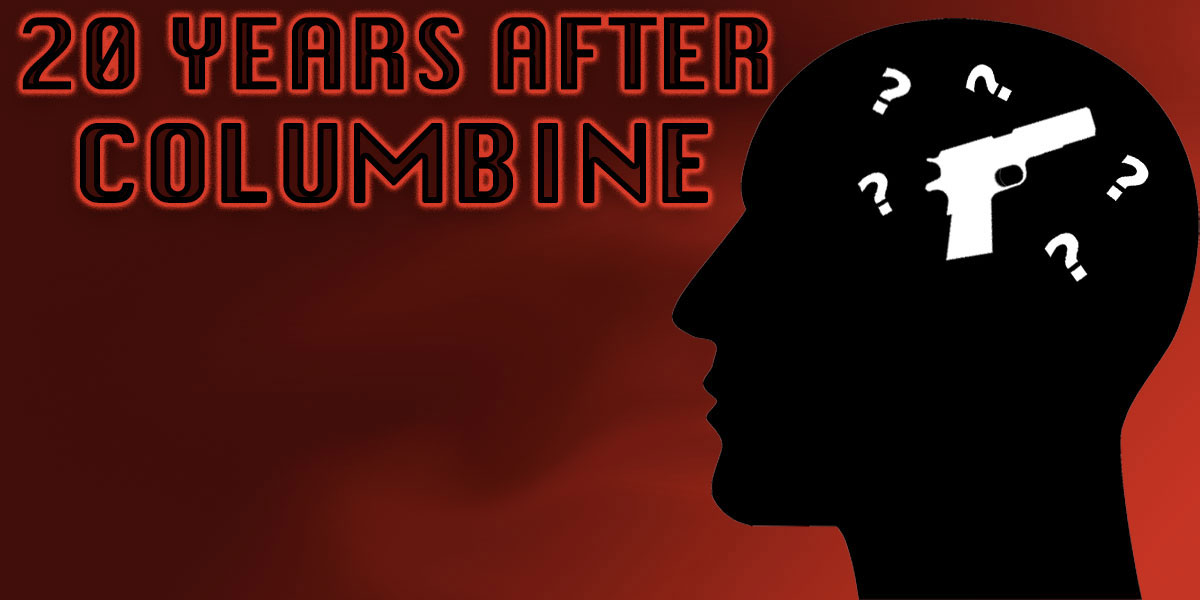— Part 6 of an 8-Part Series —
The increase in school shootings since Columbine 20 years ago has raised concern in the U.S. and triggered endless questions, many regarding the killers and what leads them to committing such gruesome crimes.
These numbers leave us wondering where such cruelty comes from. They leave us questioning the nature of man. Are there consistencies in characteristics of those who choose to open fire in a school full of children, or on a campus of optimistic college students? Twenty years ago, 17-year-old Dylan Klebold and 18-year-old Eric Harris began shooting at fellow classmates in Columbine High School, ending 13 lives and prompting major investigations to uncover what motivated the teens. There was speculation that Klebold and Harris carried out the murders because they were members of a group of social outcasts, and according to the History channel, it was also speculated they were seeking revenge for being bullied, and that violent video games and music were blamed as well. None of these theories were ever proven, according to the story documented on the History channel’s website. It’s likely we’ll never be able to pinpoint the source of evil in a killer, as the specifics vary each time a person opens fire in a school, but studies suggest several links between documented mass murderers. After the Stoneman Douglas High School shooting in February 2018, in which 17 students and staff members were killed at the Parkland, Florida, high school and 19-year-old Nikolas Cruz was arrested and charged with the murders, psychiatrist Joel Young said in an Oakland Press article that it is difficult, even for medical professionals, to identify people with deadly intentions, but there are characteristics that many mass shooters share. “These are young men with a troubled psychiatric history and antisocial personality disorders,” Young said. The most common psychological disorders associated with history’s most infamous American serial killers, according to a Forensic Education blog, are schizophrenia, which can have symptoms ranging from hallucination and delusions to emotional flatness and catatonia; borderline personality disorder, which is characterized by impulsive behaviors, intense mood swings, feelings of low self worth and problems in interpersonal relationships, and antisocial personality disorder. However, Young, staff psychiatrist at Beaumont Royal Oak, who writes for the blog, said, “It’s important to note that most people suffering from these illnesses do not commit any violent offenses. These instances of mental disorders represent only a small fraction of people diagnosed.” He said these mass shootings often occur when the individual’s personality disorder is triggered by episodes that make them feel rejected or angry and combined with easy access to weapons. In an article published on Live Science, Tia Ghose reported the findings of Mary Muscari, a forensic nurse at Binghamton University in New York, and Peter Langman, a psychologist in Allenton, Pennsylvania, and others, all who have studied mass shooters. The article covers a variety of risk factors that killers often exhibit, including a tendency to set fires or hurt animals, a lack of compassion and empathy, harboring anger and paranoid delusions, self-centeredness, low self-esteem and hanging out with an outcast group. “Despite a fairly consistent profile, psychologists can’t predict who will kill,” said Langman, who conducts trainings on understanding the psychology of school shooters and identifying potential school shooters for professionals in mental health, education and law enforcement. “Millions of people will feel disaffected and vengeful, and may even lack empathy, but the vast majority would never shoot defenseless, 6-year-old children.” These discoveries offer some insight on the origin of a shooter, but mental illness is merely one, small factor in the seemingly impossible task to make sense of these tragedies.
